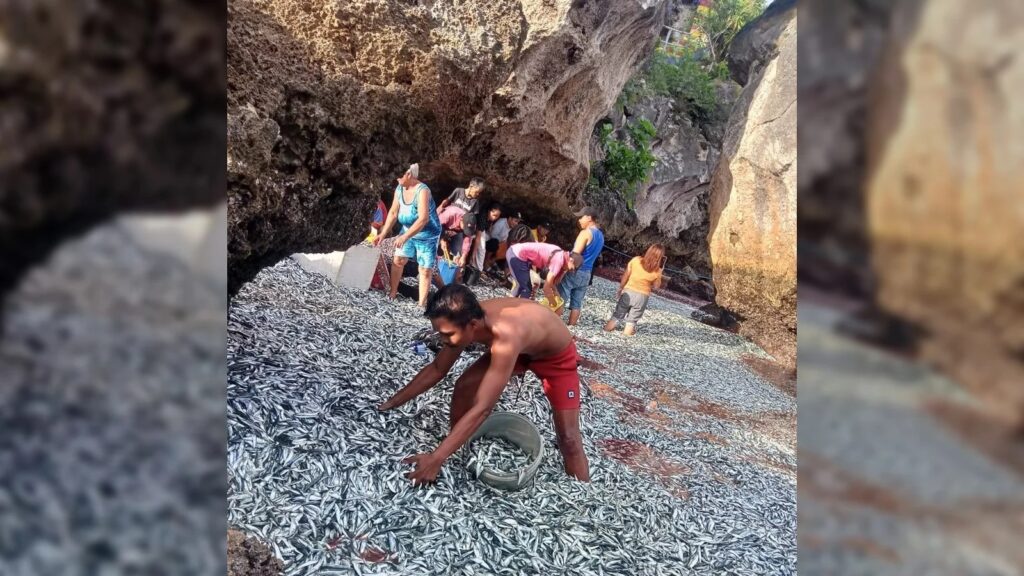11/01/2024
11/01/2024

PHILIPPINES, Jan 11: A massive aggregation of sardines, likely numbering in the millions, recently washed ashore on an island in the Philippines, adorning coastlines with shimmering silver hues as tiny deceased fish covered the shore. Approximately 48 hours later, the region experienced a powerful earthquake, triggering speculation that the fish might have sensed the impending natural disaster and sought refuge in shallow waters.
Contrary to this theory, local experts assert that the two events are unrelated, attributing the unusual mass stranding to a phenomenon called "upwelling."
The disoriented fish began swimming ashore during the early hours of Sunday (Jan. 7) along the coastline surrounding the municipality of Maasim in the Sarangani province on the southern tip of Mindanao island. Residents captured photos and videos throughout the night, depicting vast swarms of glittering sardines strewn across the beach and thrashing in the surf as they were swept ashore.
As dawn broke, locals gathered to collect the dead fish. On one beach, over 100 people individually scooped up between 44 and 66 pounds (20 and 30 kilograms) of sardines, with one family bagging over half a ton, as reported by the Thai news site The Nation. If properly preserved, most of the dead fish are expected to be consumed or sold.
While some locals view this phenomenon as a "gift from god" and a sign of an unusually prosperous new year, others interpret the mass stranding as an omen of a natural disaster.
At around 5 a.m. local time on Tuesday (Jan. 9), a magnitude-6.7 earthquake struck in the Celebes Sea, approximately 62 miles (100 kilometers) offshore from Maasim, according to the U.S. Geological Survey. The earthquake fueled social media speculation that the fish had somehow sensed the impending quake.
However, Cirilo Aquadera Lagnason Jr, a researcher at the Protected Area Management Office (PAMO) of Sarangani Bay who witnessed the sardine beaching firsthand, dismissed the idea of a connection. While acknowledging the lack of conclusive research on animals predicting earthquakes, he suggested that the most likely cause was an oceanographic phenomenon known as upwelling. Upwelling brings nutrients from the deep sea to shallow coastal waters, triggering plankton blooms. The sardines, following the plankton, likely found themselves "trapped," increasing the likelihood of beaching.
Lagnason Jr added that a majority of the stranded sardines, likely belonging to one of half a dozen species in the genus Sardinella, were juveniles, potentially contributing to their disorientation.
Zenaida A. Dangkalan, a fisheries officer in Sarangani, also cited various factors, including an overabundance of sardines, changes in ocean temperatures or salinity, predator distribution, and light pollution from human settlements, that could have played a role in the mass stranding.
The earthquake occurring soon after the stranding event is deemed a coincidence by Lagnason Jr, who highlighted that earthquakes are common in the "Ring of Fire," a region of high tectonic activity stretching around most of the Pacific Ocean, including the Philippines.


